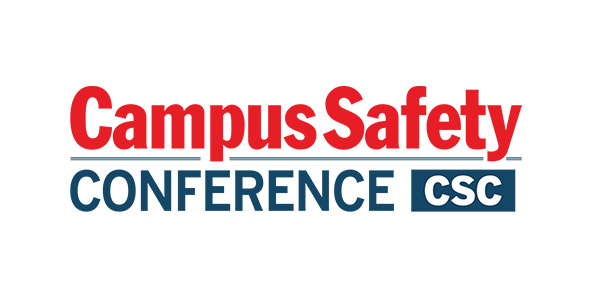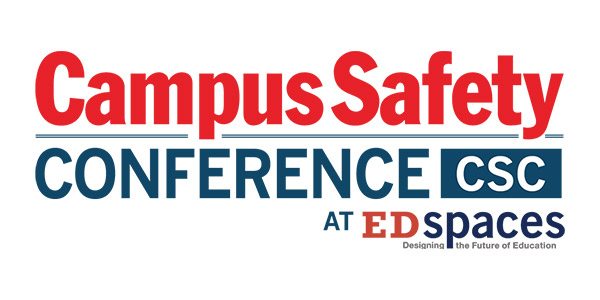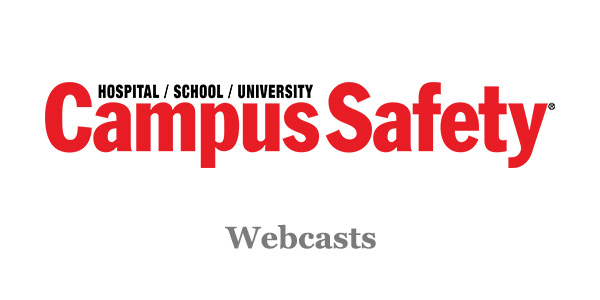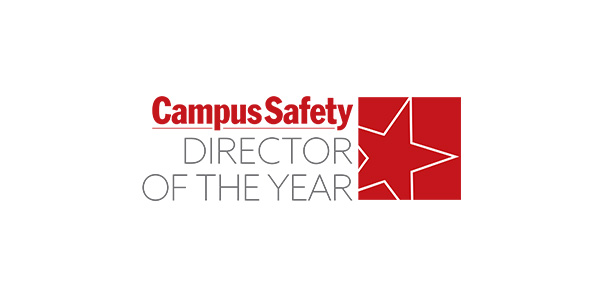Schools and universities nationwide are investing in a range of initiatives to address the active shooter threat, from mental health resources to upgraded security systems. However, one overlooked vulnerability can cost schools millions and retraumatize communities long after an emergency has ended: door damage resulting from law enforcement’s active-shooter response.
Related Article: Gun Deaths Among High Schoolers Surge, New Study Reveals
The December 2023 shooting at the University of Nevada, Las Vegas (UNLV) resulted in responding police officers damaging nearly 500 doors as they cleared campus buildings. Officers were forced to break down the doors because they were locked out of the building where three faculty members were slain. It cost UNLV $2.5 million to repair the doors.

Damage to the door of an FSU office after law enforcement responded to a shooting on campus. Photo courtesy Knox
These damages weren’t just a financial hit; they became daily trauma triggers for students and staff trying to reclaim their space after the tragedy. Additionally, swatting calls — hoax calls designed to trigger a large emergency response —often result in the same problems.
Swatting incidents are surging in U.S. schools, with more than 800 calls reported at K-12 campuses between spring 2023 and summer 2024. Although this type of threat is fake, the damage is real, resulting in smashed doors, broken glass, injuries and emotionally shaken students and staff members.
For example, in one swatting call, a police officer broke glass to get into a room, cutting his arm on the glass and dripping blood all over the floor. Although his injury wasn’t serious, it appeared serious and created more panic and chaos. It presented a more serious situation than it actually was, causing even more property damage and trauma.
Related Article: Surge in Swatting Incidents: Number of Hoax Threats Continues to Grow
Students and school personnel inherently struggle to return to the scene of the crime, especially when it can increase their trauma.
How Building-Mounted Key Safes Enable Faster First Responder Access
We can reduce delays by enabling quick first responder access with building-mounted key boxes.
No other incident better underscored the importance of accurate communication, training, leadership, tactics, policy and building access than the Uvalde mass casualty at Robb Elementary School in 2022, where 21 people were killed and at least 17 others were wounded and trapped in a classroom with their attacker for more than an hour. Numerous grave errors led to multiple casualties that day, but the most painful, preventable error was that law enforcement could not locate the correct keys to access the classrooms and stop the threat.
By contrast, during the 2023 University of Oklahoma’s (OU) swatting incident (a false alarm that they later determined to have originated from outside the country), the first responders cleared all campus buildings in 90 minutes, thanks to their uniformly mounted building safes (except for the library, which lacked a key safe).
(In addition to granting police access to the school buildings, allowing first responders to view video and audio feeds from campus cameras can help them pinpoint if and where an active threat is occurring.)
Are Electronic Card Readers Sufficient During Emergencies?
While electronic card readers look good on paper, they have a few shortcomings. Card readers are vulnerable to power outages and occasional data wipes of cards with infrequent use. Even when systems work and they have access to a fail-safe physical key, responders often fumble through dozens of keys lumped on the same key ring before finding the right one.
Key safe systems solve this by consolidating only the necessary keys into one secure, code-compliant location.
During the swatting incident at OU, every building that had the key safe was cleared in the same amount of time it took to clear the library alone, which did not have a safe. In the case of the library, first responders had to track down a special key across campus before they could enter the building.
Related Article: Fact Check: Did the Parkland Shooter Pull the Fire Alarm?
During an active shooter incident, agencies from all over will show up to campus. With the right key safe system, a designated security administrator is assigned to control who has access to the school buildings. They can also share a lock code with neighboring jurisdictions and other law enforcement agencies expected to respond to a particular school’s area. Whether it be county police, state patrol, the fire marshal or even public works, they can share the access information with the first official on the scene.
With a key box, emergency responders can go directly to the safe and find only the essential keys they need. The keys are scaled down to a few instead of a hundred.
What Schools Should Look for When Purchasing Key Safes
When looking for lock box options, it’s important that the school installs a box that meets the stringent UL-1037 certification, a requirement in several states. UL-1037-compliant key boxes undergo rigorous testing to prove the product’s integrity. It acts as both anti-break-in and theft protection from third parties. This certification is the industry standard, and testing includes a prolonged attack test after which the product “must remain unopened.”
Make sure the safety product is considered and “anti-theft device,” which means it is nearly impossible to penetrate or move the box from its secured location.
Texas, Minnesota and Utah have already passed bills adopting requirements for lock box installations in K–12 schools, and several other states are poised to follow. These measures strengthen student safety while also reducing property damage, shortening incident duration and helping to minimize student trauma during and after crises.
How Campuses Can Implement Key Safe Systems
A solid first step towards safety, peace of mind and minimized property damage would be for schools to adopt school safety guidelines from Partner Alliance for Safer Schools (PASS). They are the most comprehensive safety guidelines available for K–12 schools, assembled by experts in emergency response and school administration, and they are free to access.
Next steps would be to install rapid-entry, code-compliant solutions, such as UL code-compliant key safes. They provide first responders with immediate, controlled access to locked-down buildings, reducing the need for destructive forced entry. They are trusted by nearly 18,000 first responder agencies nationwide.
How Key Safes Reduce Response Times and Property Damage
Investing in easily accessible key access systems will increase the probability of stopping the threat in its tracks, which in turn will reduce property damage during an emergency, minimizing the mental health struggles of students, faculty and responders.
By following these steps and implementing the PASS Guidelines, schools and universities will not only minimize property damage and ensure student and staff safety, they will restore trust and peace with parents, students and the general community.
Together, we can ensure schools and campuses remain the warm and welcoming learning environments they were always intended to be.
Justin Daniels is a former fire marshal and Chief of Emergency Operations for the University of Oklahoma in Norman, Okla., and the Past President of the Center for Campus Fire Safety. He currently serves as an application specialist for Knox®. While in his leadership role at the University of Oklahoma, he gained firsthand experience responding to a swatting incident.
Note: The views expressed by guest bloggers and contributors are those of the authors and do not necessarily represent the views of, and should not be attributed to, Campus Safety.







